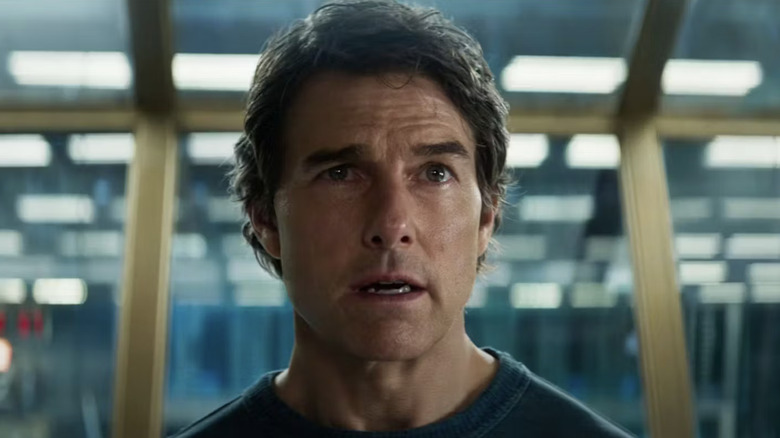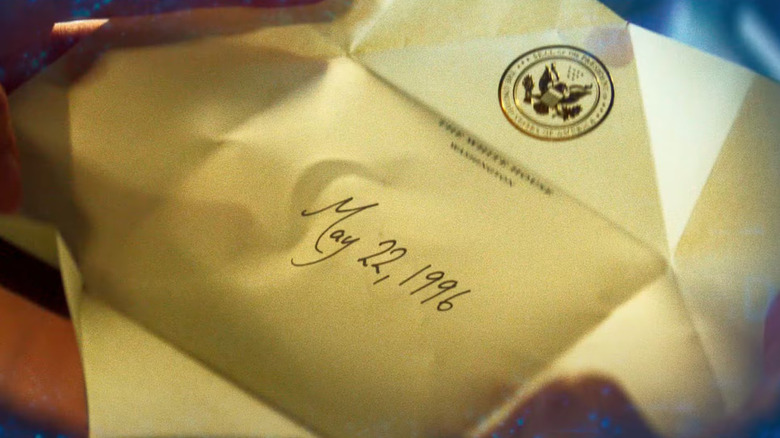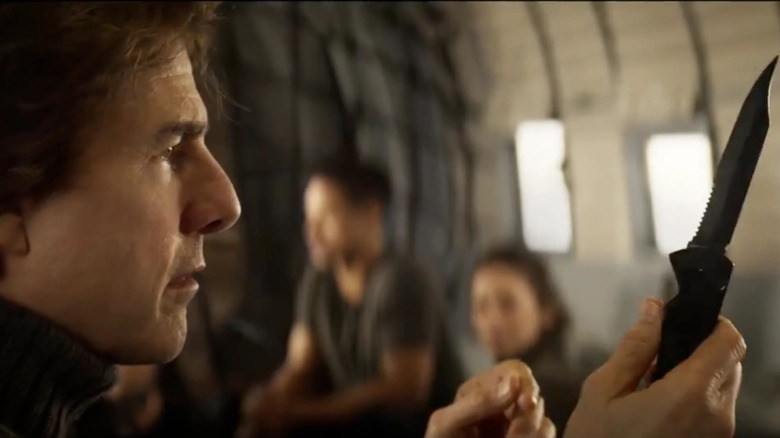The Final Reckoning's Mission: Impossible Easter Eggs Aren't Just Nostalgia Bait
This article contains spoilers for "Mission: Impossible — The Final Reckoning."
As the first reactions from "Mission: Impossible — The Final Reckoning" have rolled in prior to its wide release on May 23rd, the response to the film has been widely varied. Some adore it, some like it with huge caveats, and others think it's a huge disappointment.
While everyone's entitled to their opinion, there's one point of criticism which I feel is especially erroneous: that the film is one big load of nostalgia bait, utilizing clips, references, and Easter eggs from the seven previous "Mission" movies as little more than self-glorification. It's a criticism which is understandable in the context of franchise filmmaking and IP saturation, a trend which resulted in the creation of such jibes as the Member Berries from the first episode of the 20th season of "South Park," sentient berries whose only purpose is to spout nostalgic phrases.
If "The Final Reckoning" was truly using Easter eggs in that way, I'd admit it and move on. The fact is, however, that all the references in the film serve a different purpose, and aren't there simply to act as Member Berries. Ever since co-writer/director Christopher McQuarrie took the reins of the "M:I" series with 2015's "Rogue Nation," the filmmaker has been building a unified theory of IMF agent Ethan Hunt (Tom Cruise) and the entire "Mission" series along with it.
In "Rogue Nation," Hunt was referred to by CIA honcho Alan Hunley (Alec Baldwin) as "the living manifestation of destiny," and this was not intended as a mere over-the-top descriptor. It's a theme that McQuarrie has been building over the course of his tenure on the series, and "The Final Reckoning," more than a finale for the franchise in general, acts as a culmination of this theme. McQuarrie and the film present the references to past movies as a way of explaining how there could ever be a human being powerful enough to stop the AI Anti-God dubbed "The Entity."
To paraphrase "M:I-2" (a sequel which is referred to the least in "Final Reckoning"), every search for a hero must begin with not just a villain, but a paradox: a mortal man who can achieve the impossible.
The flashbacks prove that Ethan can be trusted to come through
In "The Final Reckoning," Ethan addresses a cabal of US government leaders and asks them to trust him "one last time." It's a moment which has been used in nearly all of the film's marketing materials, the better to underline its meta double meaning; Tom Cruise is asking the audience to trust him to entertain them, too. Indeed, Cruise (in conjunction with McQuarrie, of course) goes on to try and gain that trust via a couple of nail-biting sequences which recall famous feats of derring-do in cinema's past, namely the life-threatening diving sequences of "The Abyss," and, later, the high-flying mid-air stuntwork of films like "Wings," "Flying Down to Rio," and "The Great Waldo Pepper."
The film's self-referential Easter eggs are primarily about developing Ethan's character, as well as the movie's main theme. If the Entity is "Anti-God," the film needs to build up Ethan as a pseudo-divine figure capable of meeting the evil tech at its level. The various flashbacks to Ethan's past accomplishments are there to act as proof of his abilities — not just his physical prowess, but also his focus, willpower, and a determinism which appears to continually supersede sheer luck. Although it's true that a lot of the flashbacks to "Dead Reckoning" are there to recap important plot points from a movie which came out two years ago, they also provide a vital contrast to what we see when Ethan confronts the Entity within its coffin-like chamber.
When Ethan speaks directly to the Entity, the AI shows jim what will happen to the world if it doesn't get exactly what it wants, a mandate backed up by a dozen or so images of various ways in which Ethan will fail (and/or his friends will suffer) should he disobey. We can't see these images clearly — they're true Easter eggs, to be discovered once we can go through the film frame-by-frame — but these flashforwards to what-might-happen act as a dark mirror to the flashbacks of what-has-happened.
Later, after Ethan has regained the trust of President Sloane (Angela Bassett), she hands him a note that he is to give to aircraft carrier captain Admiral Neely (Hannah Waddingham), who will take him to the remote location where he is to eventually dive into the depths of the ocean to find the Entity's source code. The note simply says "May 22nd, 1996." Within the film, this date refers to some past incident in Serbia which tells Neely that Ethan has been vetted by Sloane as on the level. In the real world, that date is when the original "Mission: Impossible" film was released. In essence, the Easter Egg tells both Neely and us the same information: this man can absolutely be trusted to deliver.
Ethan has a destiny to change the world for the better
Even more than instilling a sense of trust in both the characters and the audience, the callbacks in "The Final Reckoning" demonstrate that Ethan has the ability to affect fate, too. In fact, that just might be what he's always been destined for. It's revealed early in the film that the Entity is the Rabbit's Foot, which was the mystery weapon that Owen Davian (Philip Seymour Hoffman) had Ethan steal in exchange for the life of his then-wife, Julia (Michelle Monaghan), in "Mission: Impossible 3."
Ethan is despondent at this revelation, realizing that this means he played an integral if unwitting part in unleashing the Entity. Ethan has always been characterized as a man who refuses to sacrifice innocent lives, a mandate born from losing his entire original team at the start of "Mission: Impossible." During his tenure, McQuarrie has upped the ante on Ethan's personal mission, tracing its origins back to the loss of a still-mysterious woman, Marie (Mariela Garriga), who was murdered by Gabriel (Esai Morales) — an incident which led Ethan to join the IMF.
Yet there's another, more optimistic side to this equation: Ethan may have inadvertently unleashed the Entity, but he's also the only one who can stop it. The reemergence of William Donloe (Rolf Saxon), who was shipped to Alaska as a result of Ethan's NOC list heist in the first "Mission: Impossible" film, allows Ethan to see that he did not inadvertently destroy this man's life, but gave him the ability to find love and a new purpose. Donloe returns the item Ethan's break-in accidentally left behind: a knife which once belonged to Franz Krieger (Jean Reno), a traitor who, along with Jim Phelps (Jon Voight), helped kill Ethan's original team. While that knife took something away from Ethan, it ended up giving something back to someone else. There are two sides to every coin.
This lesson is personified in the revelation that Jasper Briggs (Shea Whigham) is actually Jim Phelps, Jr., a fact that explains the man's animosity toward Hunt and the IMF. Briggs/Phelps initially rejects Ethan's offering of apology and truce, yet ultimately accepts it at the end of the film, after Ethan has once again achieved the impossible and killed the Entity.
When all of these callbacks and Easter eggs are taken together, it's clear that they aren't simply self-congratulatory references or even lazy fan service, but elements in a larger thesis. With them, the "Mission: Impossible" series becomes a unique exercise in mythmaking, applying near-godlike attributes to a character (and characters) who are still achingly human. It may sound impossible, but hey, that's what Hunt and his team achieve every day.


